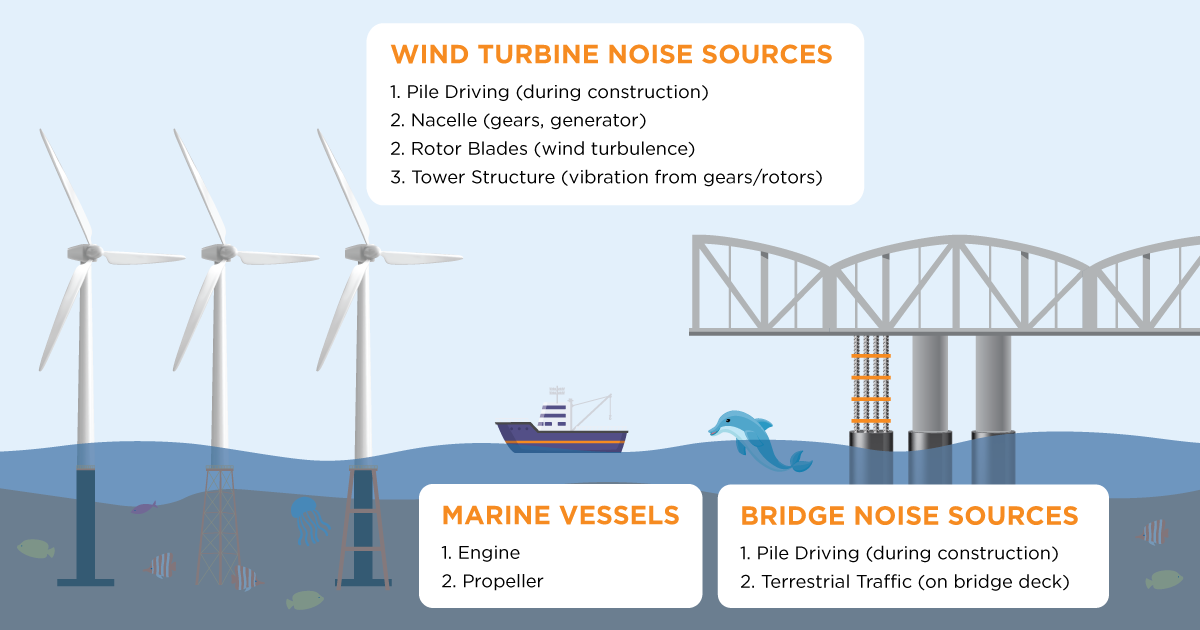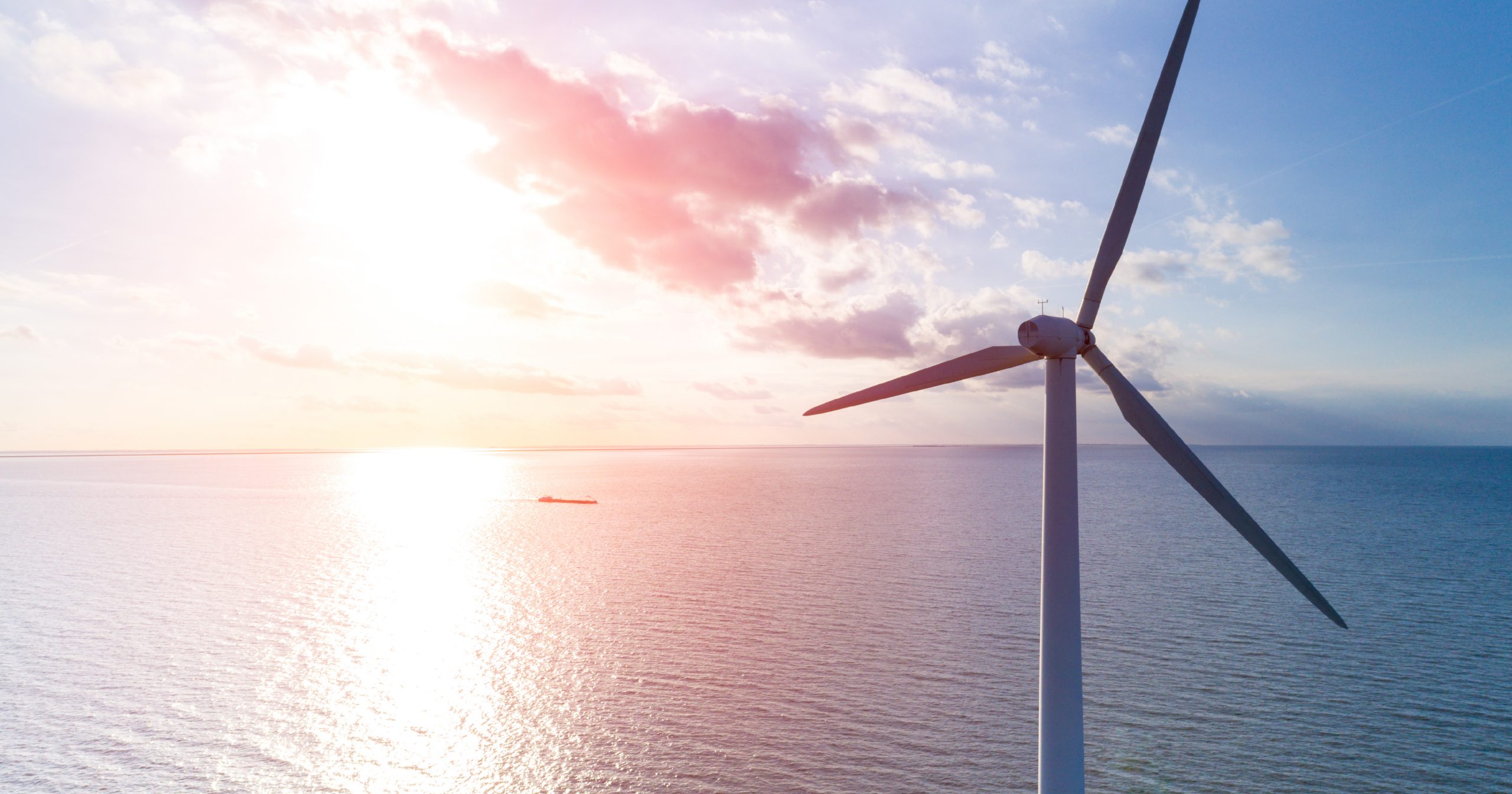Underwater Acoustics
We help our clients model the underwater acoustic effects of their projects.
We live in an increasingly noisy world. Vehicles, airplanes, and manufacturing all comprise elements of the anthropogenic (“human”) soundscape on land and in the atmosphere. Anthropogenic sound is well studied and well understood; underwater, less is known about these sound sources and how they propagate through the water.
Bridges, marine vessels, and offshore wind turbines are three common examples of underwater sound sources. The sounds generated by these sources stem from both construction and operations. Modeling how sound travels underwater can help mitigate the impact of these projects on marine life.
Understanding the underwater acoustics of these sites is especially important since many operate within or near existing fisheries or marine mammal habitats. In fact, most of the wind turbine development in the United States occurs in Essential Fish Habitat, which comprises congressionally designated areas of importance to fish.
We apply our noise control engineering services to bridge construction and offshore wind projects.
Sound generally travels through the water faster than through the air. However, the speed of underwater sound waves is also affected by water temperature, current, salinity, and seafloor topography. The complexity of this environment requires applying specialized acoustical tools and noise control engineering expertise to understand how sound propagates.
Construction of bridges and wind turbines is commonly the primary concern from a noise perspective. Sounds from pile driving can result in underwater sound levels that are high enough to kill fish and harm marine mammals and other marine life unless measures are taken to minimize these effects. In addition, marine vessel traffic and other related construction activities can be acoustically disruptive.
Operating wind turbines also propagate sound through the air, water, and ground. As the turbine blades spin, this creates sound waves that travel through the atmosphere. Additionally, the wind turbine's nacelle (the structure at the top from which the blades spin) produces noise/vibration that propagates through the turbine's structure. This sound is carried both by the water and the ground.
In the case of bridge construction, a majority of the sound originates from pile-driving activities. In fact, approximately one-half percent of the impact energy (from the hammer striking the pile) goes into the water and propagates out.
We use dBSea to predict underwater noise levels.
Using the software platform dBSea, our team of noise control engineers can accurately predict underwater noise levels across a range of scenarios and project types. dBSea allows us to model underwater sounds from marine vessels, pile driving, and other methods of construction. dBSea also makes the delivery of results simple and straightforward.

Questions? Ready to talk? Let's connect.

